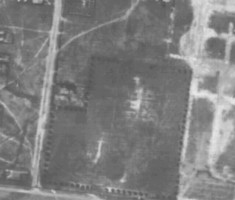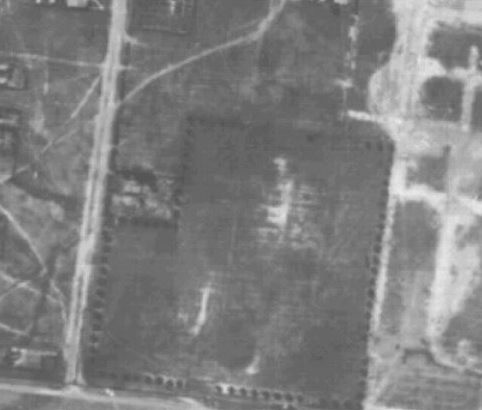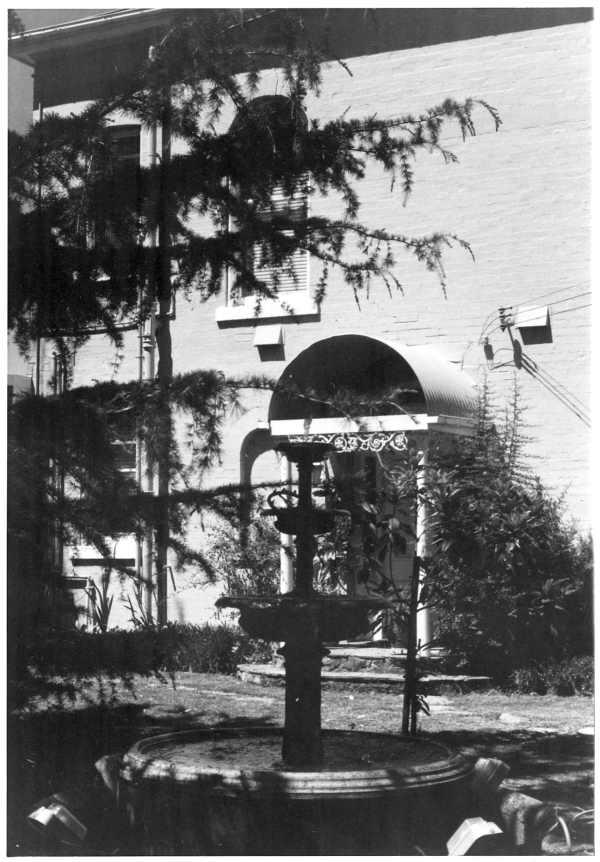(The author’s thanks are extended to Bob Harris and Bob Chandler (Reservoir Football Club) and Dick Norris (Preston Cricket Club) for some of the material supplied within this chapter).
ORIGINS
Preston Oval has been a spiritual home for thousands, of senior players over the years since it was acquired in 1875, but for practical purposes, Crispe Park has been the week-to-week Saturday destination for many others of more modest abilities.
Sadly, not a lot is known of the history of the acquisition of the Park.
Preston Council in 1972 commissioned a publication “Preston’s Parks and Reserves” which gave a description of all the recreational areas and their facilities – it also gave a brief history of all except one – Crispe Park!
Confusing the issue are reports in 1925 of Preston Council acquiring around nine acres of land for £1,600 as part of the Leslie Estate “near the Reservoir railway station” for a recreational reserve with references to it as “Reservoir Park”.Other reports, however, refer to the Leslie Estate as connected to Broadway, and “Reservoir Park” seems almost certain to be the T. W. Andrews Reserve wedged between Cuthbert and Strathmerton Street.
The first definite reference to Crispe Park is in September, 1931 with a re-formed Regent Cricket Club using the ground, but there is a suggestion that the Prestonite club from Zwar’s Tannery may already have played there.
A Pavilion?
Facilities must have been sparse – it wasn’t until August, 1938 that the Regent Football Club requested the construction of changing rooms as part of a bid to join the Melbourne Amateurs competition.
Reports on Council meetings of the day suggest that there were plans to fence the oval as part of the construction project, but there is no record of the Regent Football Club ever playing in the Amateur Association (they appear to have fielded under-age sides prior to the application) and the only available photograph from around that time is not of sufficient quality to suggest one way or another whether a fence exists.
Whether a pavilion as such was erected appears doubtful with Council under pressure to complete more important projects – road construction, sewerage and the provision of electricityin the rapidly developing city
Our local Leader newspaper may have given readers of the day an update on Crispe Park (especially when it was so-named) but
unfortunately, no copies of the Preston Leader remain after April, 1939 – prior to this date, the Northcote and Preston editions were identical, but around this time, the Preston Post became a separate publication and it appears with no copies ever sent to the State Library for archiving.
Some recollections passed on by Reservoir Football Club historian, Bob Harris and provided by Bob Chandler, whose family have been involved with the club since the mid-1940s suggested that the “pavilion” around 1944 was the old caretaker’s shelter transferred from the Preston Tip – with no showers and just a hessian curtain strung across the centre to divide the two teams (as Bob suggested, a bit “testy” after the game if there had been any ill-feeling).
After a year, a group of the club members led by Fred Birchall, Alan Chandler’s future father-in-law and a local builder) added a small canteen and divided the shed, adding a concrete floor and showers (cold) at each end,
The pavilion at this time was on the Gloucester Street side of Crispe Park with the ground running east-to-west, although the aerial view of the ground from around 1945 suggests there were two crickets pitches running north – south at either end.
The goalposts were shifted to their current position around 1950, and in 1952, club members including Birchall and now son-in-law Alan Chandler drew up plans for new rooms to the southern side the Park, roughly where today’s cream-brick toilet block stands.
The Council erected a scoreboard on the present site, later with a make-shift canteen underneath.
Two or three years later, the Reservoir club approached the Council again with an offer to extend the rooms and add a proper canteen with the umpire’s rooms replacing the earlier canteen. Again it was Fred Birchall and Alan Chandler that controlled the construction under the supervision of the Council’s Building Inspector, erecting two large change rooms, canteen, umpire’s rooms and a small secretary’s office, all enclosed within a ten-foot high cyclone wire security fence.
According to Dick Norris, Preston Cricket Club first used the ground for Third XI matches in 1944 and then for the new Fourths competition in 1948. Crispe Park was also for many years a pre-season training ground for the Preston Football Club over the summer months when Preston City Oval was being used for cricket.
The iconic cypress trees remain along the western side, but up until the 1970s, they surrounded the playing area, perhaps removed when today’s pavilion was built.
Cr. Charles Thomas Crispe
The park derives its name from Cr. Charles Thomas Crisp (1852-1932), who served on Preston Council from 1897 to 1930, was Shire President four times and the first Mayor when Preston was elevated to the status of a Town in 1922. He was also Mayor of Fitzroy in 1890-91 before moving to Preston.
He was Preston’s first representative on the Melbourne and Metropolitan Board of Works and a founding member of the Fitzroy, Northcote and Preston Tramway Trust which was responsible for establishing the link from North Fitzroy along St. George’s Road to East and West Preston.
In private life, Crispe was a real estate agent, primarily in North Fitzroy and lived in a large residence in Northernhay Street for many years.
Crispe Park – 1945
 The aerial photograph of 1945 is of poor quality but it gives some idea as
The aerial photograph of 1945 is of poor quality but it gives some idea as
to how the Park looked when Bob Chandler first became involved with the
Reservoir Football Club around 1945.
The first surprise is that it extended south to Locksley Avenue, the
stretch along here obviously sold off for housing at some stage.
The playing area appears to have covered nearly the entire area with the
exception of the north-west corner where today’s pavilion is located –
the conifer trees were around the playing area and not the Park itself.
The approximate position of the two cricket pitches is shown.
Just to the north of the “dog leg” appear to have been a few small
buildings; probably the shed in Bob Chandler’s description.
There was one house (Number 1) on the south-west corner of Gloucester Street
and Locksley Avenue – other than this, the closest neighbours were scatterings of houses about 60 metres north in Gloucester and Pine streets on a parallel with Wright Street.
None of the streets appear to have been made and there no houses to the east.
Pine Street and Coleman Crescent did not connect. Coleman Crescent just ended about 20 metres west of Clinnick Street; Pine Street turned into
a dirt path connecting to Gloucester Street at the northern corner of the Park and then through to Gilbert Road. Clinnick Street appears to have extended as a walking track on the eastern side of the Park.
Although still a paddock in 1945, Preston Council had owned the land in Wright Street where the Senior Citizen’s Club now stands since around 1929

